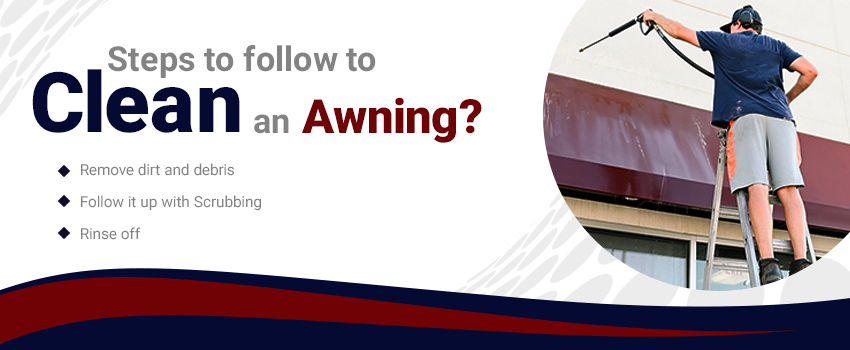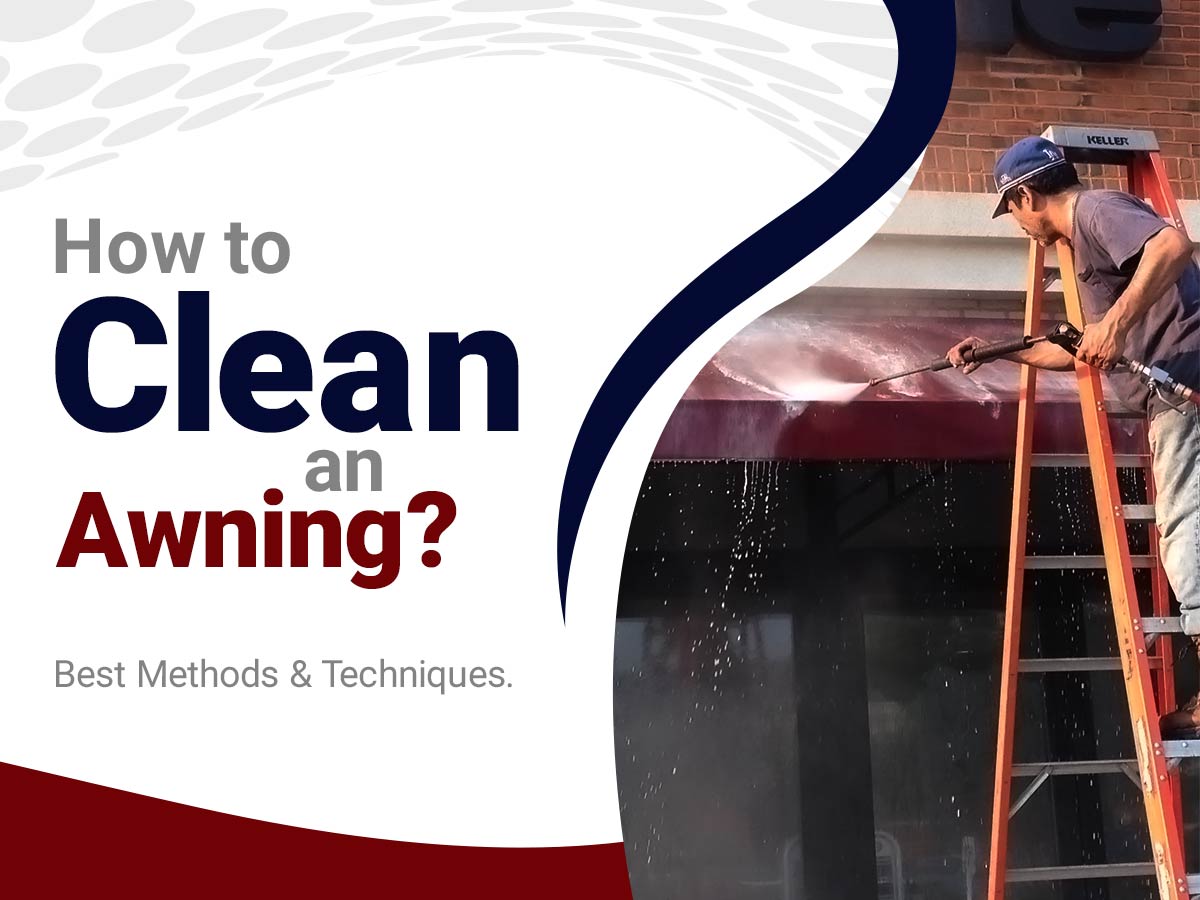Very relaxing hours can be achieved beneath the awning’s shade and protection from the sun. Particularly if your sun protection system is likewise brilliant in appearance. You must also clean the awning to ensure that it remains in good shape. Due to the constant strain that the sun, wind, and weather inflict on your shade system.
After being put to constant use throughout the warm season, the awning should be given thorough upkeep during the winter months. When your awning is cleaned regularly, it may be cleaned with less force. In addition, it prevents the accumulation of debris that is difficult to remove when you clean your awning. As a consequence, you will have a solar shading system that is immaculate, well-maintained, and valued, which will bring you delight for a very long time.
In this blog, you will be learning a complete approach to how to clean awnings optimally.
Steps to follow to Clean an Awning?
 Following are some of the steps that you need to impart in your schedule to keep your awnings optimally clean throughout the year-
Following are some of the steps that you need to impart in your schedule to keep your awnings optimally clean throughout the year-
Remove Dirt and Debris
While cleaning an awning, the first thing you should do is use a broom. Remove any stray leaves, dirt, cobwebs, and other kinds of debris by sweeping. Wipe out the underbelly as well. Use a ladder if the height of your awnings requires it. Once you’re on the ladder, you should exercise extreme caution. Spraying your awnings with clean water should be done after you have eliminated quite enough debris you can.
Once a month, sweep your awnings to remove any built-up contaminants and to maintain their appearance.
Make/Buy a Cleaning Solution
After that, you will need to combine the ingredients for a cleaning solution. You will need to employ a variety of various cleaning solutions, and this will be determined by the material that the awning is made of.
When cleaning fixed, roll-up, or retractable awnings composed of canvas or other outdoor textiles, use a gentle laundry detergent and water that is just slightly warmer than room temperature. If you so choose, you can also clean the vinyl or cloth with a special cleaner.
Use a metal cleansing solvent and water together to clean metal awnings. If your awnings have been constructed of aluminum, you should clean them with a solvent that was developed specifically for aluminum.
Tip: At this juncture on how to clean awnings, you need to understand that you can either make or buy a cleaning agent according to the material of the fabric that your installed awning is made of.
Follow it up with Scrubbing
Fill a spray bottle with the cleaning solution. Use sponges and a bucket to apply it, or just spray it on the awning. Allow the solution to work its magic for a few moments. The awning should then be scrubbed with a gentle bristle brush. It needs an inside and exterior cleaning.
If scrubbing your awnings doesn’t get rid of the stains, consider one of these alternatives:
- Rust and iron oxide can be scrubbed away with a solution of citric acid and oxalic acid.
- To get rid of mildew, use dishwashing liquid.
- The droppings of birds can be cleaned up with a degreaser or a dish detergent that is designed to cut through grease.
Rinse Off
The next step is to use a garden hose to give your awnings a complete and thorough cleaning. Be sure that you get rid of all of the cleaning solutions, both on the inside and the outside. The cleaning solution that has been used up will collect dirt, which means that you will need to clean the awnings more frequently.
Before rolling or retracting awnings made of fabric or vinyl, take the necessary precautions to ensure that they are completely dry. This will prevent the growth of mold and mildew.
Under no circumstances should you clean your awnings using a power washer. That could cause harm to them.
Bottomline
Awning fabric care keeps your awning shaded and weatherproof for years. Your awning may retract into a cassette, be protected by a hood cover, or be a compact roll against a block. Fixed awnings are always exposed to the weather.
Fabric awnings should be cleaned regularly. Temperature and rain affect the canopy. Airborne pollutants, filth, oils, bird droppings, bugs, leaf tannins, tree pitches, and other substances can stain or bleach textiles. Dirt can creep into the mesh and produce mold. Rolling up damp covers will undoubtedly cause mildew, even on permanent material.
Different fabrics require different soaps and water-resistant or impermeable and mildew-resistant coatings. You may clean your awnings yourself or contact a pro.
Therefore, the above is a stepwise guide on how to clean awnings that you must know and be aware of before you decide to install or decide to clean up the awnings at your place.
 Following are some of the steps that you need to impart in your schedule to keep your awnings optimally clean throughout the year-
Following are some of the steps that you need to impart in your schedule to keep your awnings optimally clean throughout the year-

